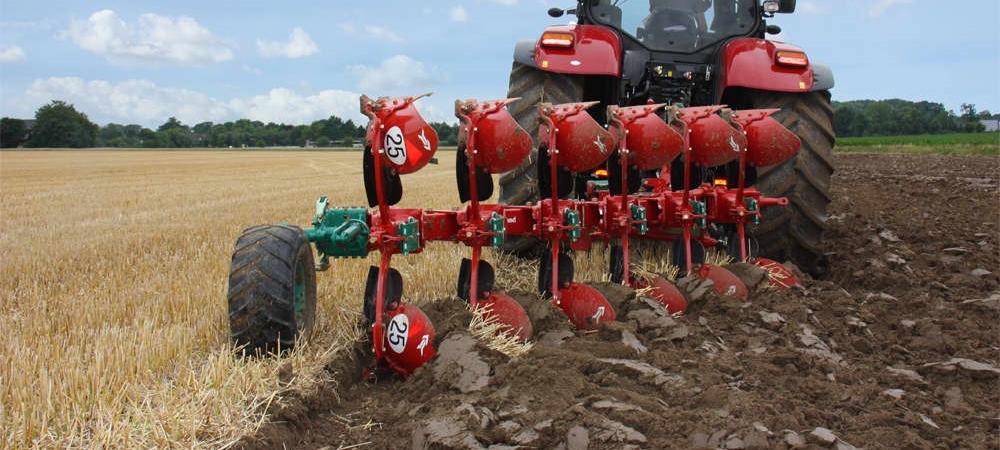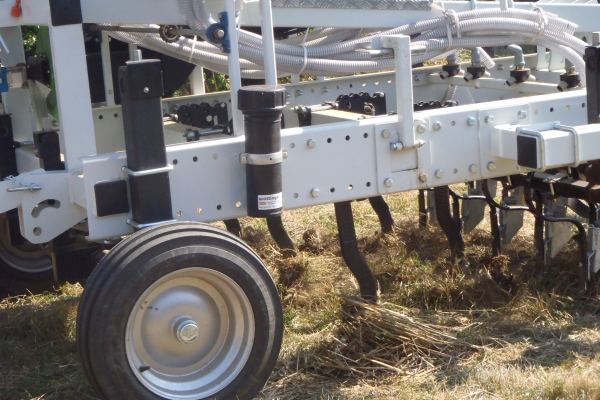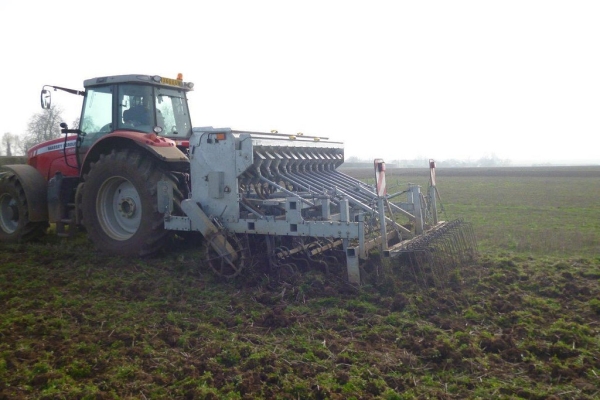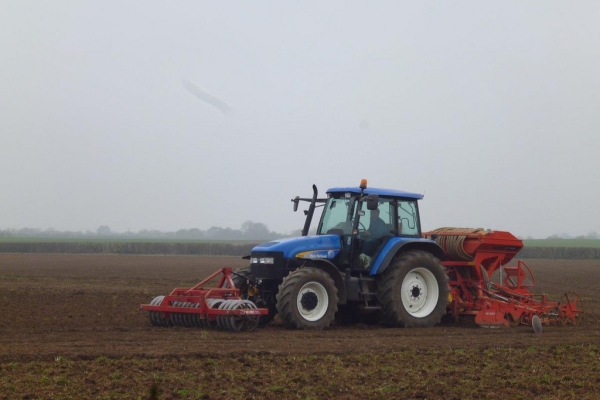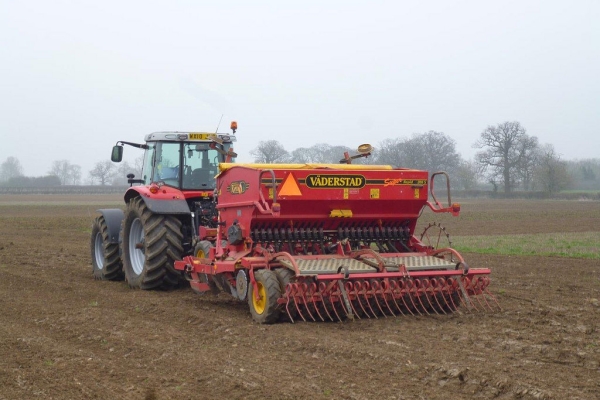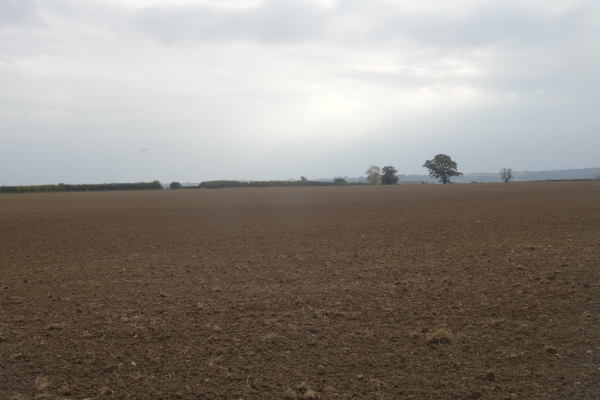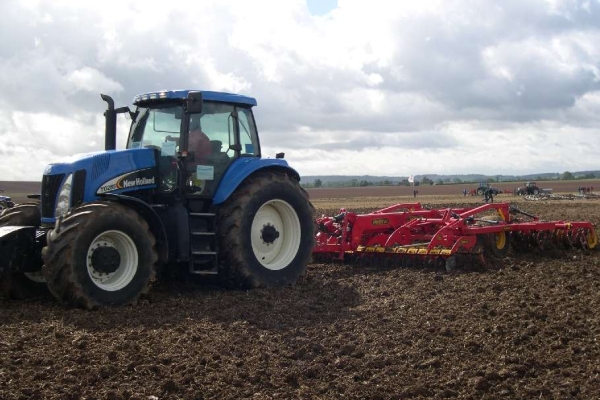Soil cultivations: ploughing, non-inversion tillage and soil quality
Ploughing has received bad press in some organic farming circles due to the higher fuel requirements and the fact that it buries soil organisms and green material at too great a depth. The perennial questions are: should we plough and if so how deep?
Over many years I have remained a supporter of the plough but been actively involved in non-inversion tillage organic farming trials; the focus on minimising damage to soil life such as earthworms and mycorrhizae, avoiding disruption of the optimum stratification and depth of soil organisms, avoiding turning down manure, green manure, and the fertile topsoil too deep for maximising plant utilisation, all make shallow ploughing and / or minimal tillage a no-brainer. But it is not as straightforward as you might think! And don’t be taken in by the over-enthusiastic specialists who extrapolate successful practice in their own situation to universally applied dictates and dogma; site specific solutions are generally needed, even if we are working to common principles underlying a more sustainable farming.
Many farmers have discovered that they can do without the plough; experiences are reported in the IOTA Technical Leaflet Non Inversion Tillage in Organic Arable Cropping. This review features Richard Gantlett who has shown that with a combination of tined and duck foot cultivators, generally used in multiple passes it is practicable to operate a non-inversion tillage system on the well drained, relatively easily worked, calcareous clay loam soils of Wiltshire. This avoids inversion but still involves working at 15 – 25 cms.
More radical is the work of Friedrich Wenz of southern Germany who has developed a stockless farming system based on a unique machine, the EcoDyn. This fixed tine tool bar allows very shallow cultivations and weed control by repeated skimming of annual and perennial weeds. While in some circumstances good results have been achieved, weed control has not been as good as with a plough and where multiple passes have been made in order to get better weed control crop yields have been substantially reduced due to poorer soil structure and aeration in winter crops on heavier clay loam soils in Gloucestershire. The results from our work at The Organic Research Centre are interesting. Perhaps Wenz also found that the fixed tine, tool bar technique does not always work as well as he claimed as I see that he is now also using powered cultivators.
Direct drilling cereals into a crimped green manure is currently much in vogue, enthusiastically advocated by the Rodale Institute in Pennsylvania. They make great claims for carbon sequestration using this technique; in my experience they are unlikely to be achieved in all soil and environmental conditions. Unfortunately the research is not fully written up. The technique has not proved consistently effective in the maritime climate of the UK or in the Argentine Pampas, where I am involved. It remains one of those good ideas which has a long way to go before commercial application in the UK.
I have been motivated to put these notes together by the very recent publication of results from the long term DOC trial at FiBL in Switzerland, which includes a 15-year comparison of ploughing with reduced tillage.
Read the report for the full details but among key conclusions they found:
“Clay loam in temperate Switzerland: reduced tillage vs. ploughing, solid vs. liquid manures and biodynamic preparations.
A synthesis of 15 years reveals an increase in topsoil organic carbon (SOC, +25%), microbial biomass (+32%) and activity (+34%) and a shift in microbial communities with conversion from ploughing to reduced tillage. Soils under reduced tillage are more stratified in SOC and nutrients……………Both higher and lower yields were harvested in the reduced tillage system in relation to ploughing. The main yield determinants were N supply and higher weed infestation under reduced tillage. Continuously reduced tillage in organic farming has been proven to enhance soil quality at this site, while also presenting more challenges in management.”
In this trial there are some clear advantages for the reduced tillage system over ploughing, which are in part due to shallower cultivations (5 cm – with occasional loosening to 15 cm – compared to ploughing to 25 cm) avoidance of inversion, and less soil disturbance at depth. This trial shows some very significant advantages for many beneficial soil organisms including earthworms and fungi. Not surprisingly the trial found soil carbon was higher in the top 10 cm layer with reduced tillage. However, unlike many other cultivation trials results, which show lower soil carbon below 10 cm, in this trial soil carbon was similar in both systems, probably due to the soil type.
Lessons learnt
The lessons that can be learnt from these various experiences are many:
- Beneficial soil life is enhanced by shallower and reduced cultivations
- Shallow or reduced cultivations will raise total soil carbon in some but not all circumstances
- Increased cultivation frequency will oxidise organic matter, which may be to the benefit of crop yield but depletion of soil carbon
- Non-inversion tillage will reduce topsoil water loss
- Reduced or non inversion tillage can be made to work successfully provided the right equipment is used in the correct way
- What ever machinery is used, beware of over cultivating soils, particularly poorly structured and clay soils
- If ploughing, then do so as shallow as possible. i.e. maximum 15 cm.
Ploughing is not all bad and it remains the most effective means of weed control, it is usually essential for crops such as potatoes and it is a predictable method of seed bed creation, particularly in difficult weather conditions. So ploughing is likely to remain an option for many if not most organic farmers, just ensure that you have the right plough bodies to allow you to plough as shallow as possible.
Look at all the relevant research, observe and learn from other farmers and advisers, and develop a system and practices that are appropriate to the soil and environmental conditions in which you are working.
Mark Measures is a former member of the Agricology Steering Group. Find out more about Mark and his work here.
Header image courtesy of Mark Measures. All Rights Reserved
